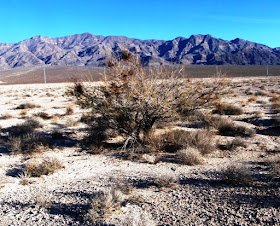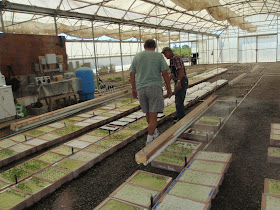Q.
I discovered some white things on my grape leaves where it is connected to the
branch of the trunk. The plant is only in its second year, bought from a local nursery
last year. The leaves are green, but the vine does not grow. Please let me know
what I should do.
A.
The picture you sent was not clear. But what I could see looked like nothing I
had seen here before on grapes. Grapes, both wine and table grapes, are being
grown more and more in the Las Vegas Valley. It’s only a matter of time before
pest problems in grape growing areas will become our problems as well. Some of
these problems can devastate grapes.
The first thing I noticed on the
leaves of your grape plant were “shiny” leaves. The upper surface of the leaves
was shiny and sticky to the touch. It was attracting ants and bees. This is
from insects that entomologists call “piercing and sucking”. I pushed these
leaves aside and found mealy bugs. This was a “new” insect for me on grapes
growing in the Las Vegas Valley.
Piercing and sucking insects (aphids
are in this group) damage the plant to get at plant juices that are full of
sugar. These insects feed and defecate a concentrated, sugary residue that
lands on the leaves. This sugary stuff is what attracts the bees and ants.
A control strategy, that doesn’t
involve spraying chemicals on the plants, is controlling the ants. Ants like piercing
and sucking insects because of the sugar. They will move young insects to uninfested
locations to increase their supply of sugary “honeydew”. Controlling ants
reduces the spread of these insects to new locations.
Soap and water sprays applied
directly to mealy bugs and other piercing sucking insects will kill them. There
is no poisonous residue left behind so it should be repeated every three or
four days until the problem is under control.















